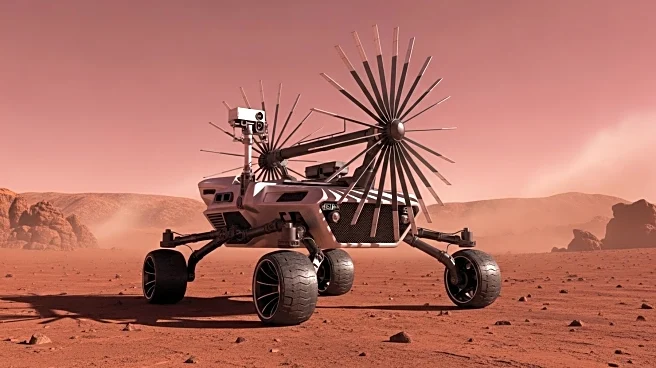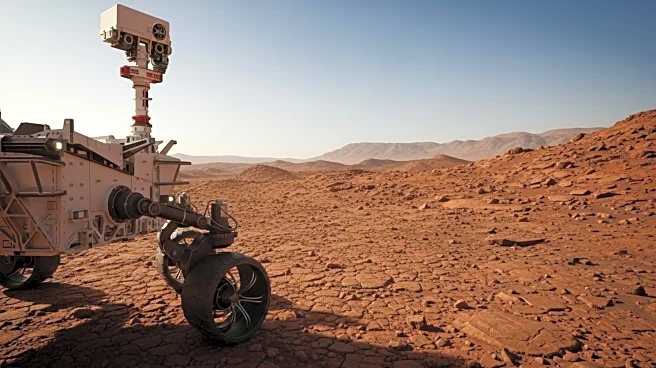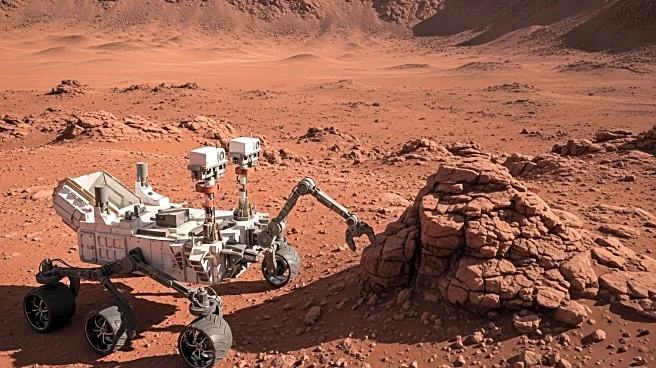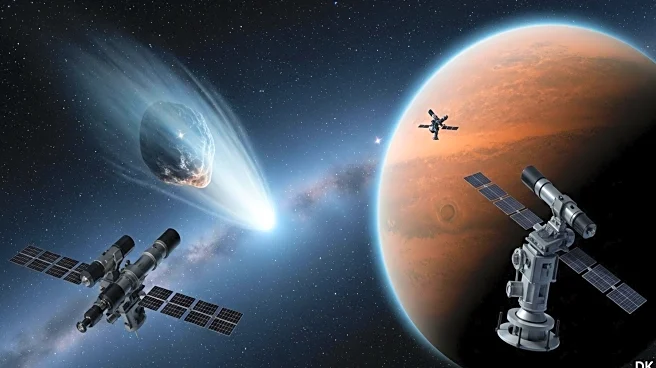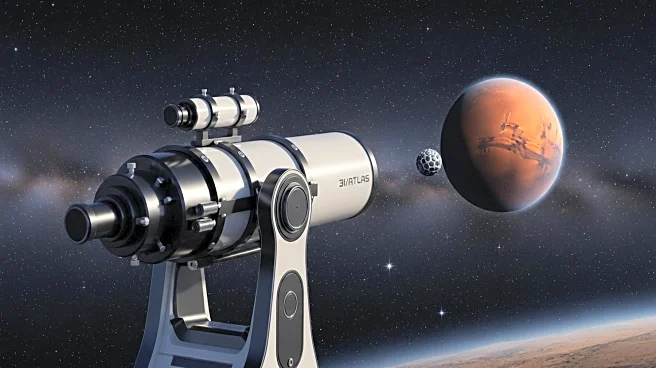What's Happening?
Team Tumbleweed has successfully tested its innovative Mars rover concept, known as the Tumbleweed rover, which is designed to roll across the Martian surface driven by wind. The rover, a spherical robot equipped with fabric sails and solar panels, aims to provide a low-cost, large-scale exploration alternative to traditional rovers. Recent tests conducted at Aarhus University’s Planetary Environment Facility and a quarry in the Netherlands have confirmed the rover's ability to traverse Mars-like terrain. The Tumbleweed rover concept, supported by the European Space Agency Business Incubation Centre, plans to deploy a swarm of these rovers on Mars by 2034. The rovers will map their journey, pinpointing areas of potential habitability, and eventually form a distributed network of sensors across the Martian surface.
Why It's Important?
The successful testing of the Tumbleweed rover represents a significant advancement in Mars exploration technology. By offering a cost-effective and scalable solution, this concept could revolutionize the way scientists study the Martian environment. The ability to deploy a swarm of rovers could provide comprehensive data on Mars' habitability, aiding future human missions and scientific research. This approach also highlights a shift from high-cost, single-unit exploration models to more resilient and wide-ranging methods, potentially accelerating the pace of discovery and reducing mission risks.
What's Next?
The next steps for Team Tumbleweed involve refining the rover's design and integrating additional scientific instruments, such as radiation sensors and soil probes. A field campaign in Chile’s Atacama Desert is scheduled for November 2025 to further test the rover's capabilities. The ultimate goal is to launch a mission to Mars in 2034, deploying up to 90 Tumbleweed rovers to begin their exploration. Continued development and testing will focus on ensuring the technology works reliably under simulated Martian conditions.
Beyond the Headlines
The Tumbleweed rover concept not only promises advancements in space exploration but also reflects broader trends in technology development. The modular, mass-producible design aims to bring the CubeSat concept to Mars, emphasizing the importance of scalable and adaptable solutions in scientific research. This approach could influence future exploration strategies, encouraging the use of swarm-based models in other planetary missions.




